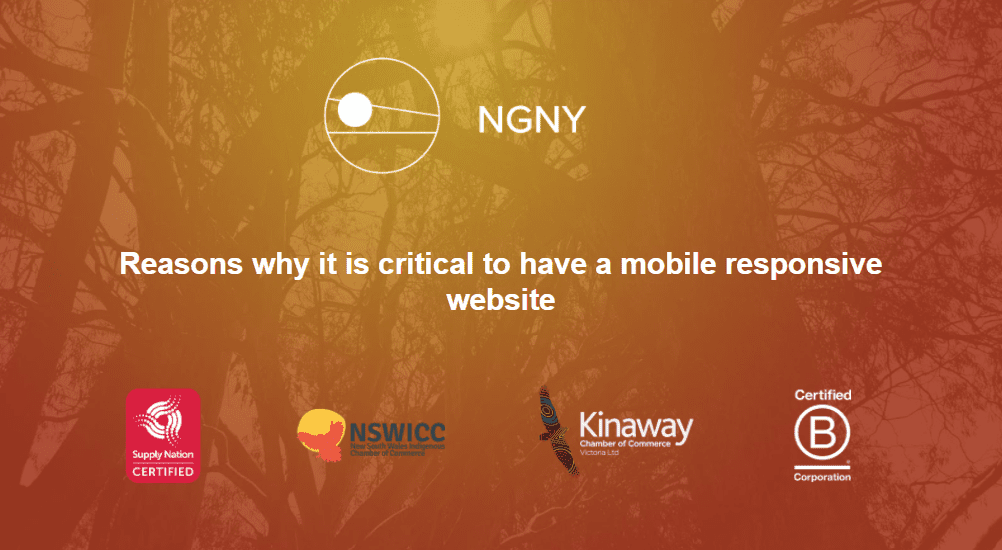
In this digital age, the rise of mobile devices is only the beginning of a shift to more convenient web usage. Thus, it becomes a necessity to ensure that your website can be viewed and accessed by users on any device specifically on mobile devices. A responsive web design equates to your site being mobile-friendly which in turn translates to high visibility. According to Google, websites having responsible designs is considered a best practice. Consequently, Google drives 96% of mobile search traffic. With the Google algorithm update, the following optimized elements must be observed for an effective mobile-friendly user experience using responsive web design: Text that must be readable, content which should fit the device’s screen, adequately spaced out links and buttons, and fast load time for pages seen on mobile.
A responsive web design works by a Web server sending the same HTML and CSS files to all clients, regardless of whether the client is a desktop, tablet, or smartphone. Visual presentation is tailored to smaller screens by a special module, Media Queries, released with CSS3. The general principle of Media Queries is that it ignores CSS declarations for large-screen displays whenever the display width is less than a predetermined number of pixels, or “breakpoint”. Under the breakpoint, visual elements can be resized, modified or even deleted if they are deemed unnecessary on smaller screens. Now that we’ve known a little bit about responsive website design, here are the top reasons why you have to do the switch as it can make or break the growth of your business.
- Drives more traffic to your website to increase lead generation, sales and conversions. That’s why websites must understand how critical it is to develop a responsive website as incompatible websites would lead to loss of prospects and opportunities for conversion.
- Fuels online shopping on mobile devices. Especially with the pandemic where people are encouraged to stay indoors most of the time, the number of people who are online shopping steadily increased as well. The advantage of this is obvious. You can shop anywhere at any time. According to a survey, 70% of shoppers now use mobile phones in stores during the holidays. If your products cannot be accessed on mobile, you’re actually missing out big time.Recent statistics show that there are about 3.5 billion mobile phone users worldwide accounting for almost 60% of all website traffic. The trend will likely increase as the digital era solidifies the use of mobile phones now as a necessity.
- Provides more visibility in search ranking engines. Google’s recommended approach is responsive development for mobile web design. The consequence of ensuring responsive websites is the assurance of better performance in terms of search rankings primarily because they provide a better user experience. Google also recognizes the advantage of using a single- URL for mobile web design. However, bear in mind that SEO rankings on a desktop search and mobile search are not mutually exclusive. Since Google launched a separate algorithm for mobile phones, just because your site ranks high via a desktop search doesn’t mean it will automatically translate to your mobile rankings.
- Entices more mobile visitors through social media. In relation to number 3, social media has been integral in this digital era and a whooping 55% of social media users share website links to Facebook, YouTube, Twitter, or Google Plus. This is very helpful in growing your brand because of the generated traffic and viewing of your website from mobile devices. A top-notch social media strategy must be done in order to take advantage of this benefit.
- Guarantees a better user experience. Providing a better user experience must be the goal of website owners. There is no easier way to lose a potential client than having an unfriendly and inconvenient website, more so, a website that is not mobile friendly. This is what a responsive site aims to address. No more horizontal viewing, zooming for unreadable text, side scrolling, or waiting forever for a page to load on mobile. And a better user experience reduces bounce rates, boosts website conversions and improves brand perception.
- Refines your content on the website. Since there are considerations to follow in crafting a responsive website, this allows you to be more creative and strategic in your content to actually be compliant with Google’s responsive website guidelines. This means trimming out unnecessary content and making sure you keep it as concise as possible.




